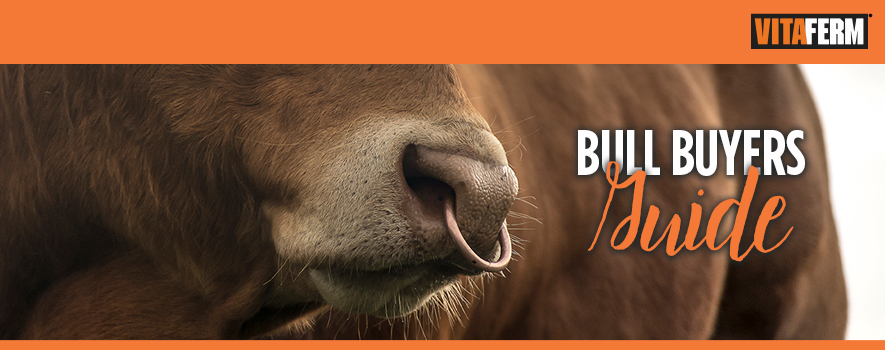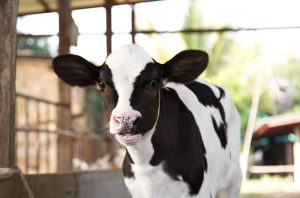by Travis Meteer, University of Illinois, Beef Extension Educator
Are you sifting through stacks of bull sale catalogs looking for your next bull? While bull selection can be a daunting task, your choice will impact your herd for years to come. Thus, taking some time to think about what you need from your next herd sire is important.
Here are some points to emphasize when it comes to bull selection.
Know your market. Understand what traits are value added-traits for your market. One of the best parts about the cattle industry is the different ways producers achieve their goals. While selling calves at weaning into the commodity market is the majority, some cattlemen are marketing in very creative ways. Local freezer beef, retained ownership, alliances, branded beef programs, video sales, or fitting the production environment to a consumer demanded practice are all ways farmers are adding value to their calves. Your bull selection should be based on traits that are profitable in your market.
Don’t sacrifice functional traits or adaptability to your production environment. It is really easy to get caught up in the data, but remember these critters need to be sound and function in the pasture. Good feet and legs, a strong libido, and docility are all imperative. Masculinity, big testicles, and a tight sheath are good phenotypic indicators of the right kind. Buying bulls that are raised in similar conditions to your farm is preferred. You can buy someone else’s genetics, but you can’t buy their management.
Require a passed BSE (Breeding Soundness Exam) and farm herd health protocols. I also suggest a quarantine period for new purchases. A minimum of two weeks will allow time for potential pathogens to break without exposing your herd. Lots of times cattle coming from a sale have experienced elevated stress. It is important to keep them on good feed, in a clean pen, and allow the quarantine period to run its course.
Identify and understand Expected Progeny Differences (EPDs) and phenotypes that signify value added traits you are seeking. Calving ease (CE) is an important and valuable trait. Sometimes when talking to producers I hear them stressing CE and birth weight (BW). BW is an indicator trait for CE, but you don’t get paid for light birth weight calves. You get paid by not having to invest time and labor in pulling calves. So, avoid putting too much downward pressure on BW, especially if the bull will breed cows. Another mistake I see is purchasing low BW bulls for cows. This is not necessary. Many times you can purchase a bull with average or better calving ease for cows at a discount to “heifer bulls” with comparable growth. Smooth, flat shouldered bulls with decent CE EPDs are good value bulls for breeding mature cows.
If you sell your calves at weaning through the sale barn and keep your own replacements, traits of priority should be CE, heifer pregnancy, stay-ability, and weaning weight. Selecting for more yearling weight, too much milk or too little milk, or carcass traits are much less important in this scenario. If you retain-ownership in your cattle through the feedlot and market to the packer, then yearling weight and carcass traits become more relevant to your bottom line. Your ultimate goal should be to produce the most profitable product, thus seek traits that add value without increasing cost of production over the value of the trait.
Utilize appropriate multiple trait selection indexes. Find the sweet spot/ profitable window in milk, YW, and carcass EPDs. Avoid putting too much emphasis on one trait. Nearly all breeds now have dollar index values that help put economics to trait selection. These can be extremely effective tools if the index scenario matches your operation. Weaned Calf Value ($W) is a dollar value used by the Angus breed. It is an index that is designed for cattlemen that primarily sell calves at weaning. This index also assumes that replacement heifers are retained. EPDs for birth weight, weaning weight, milk, and mature cow size are focused on. Lower birth weights, heavier weaning weights, and lower mature cow size are desirable. Milk production is weighted both positively and negatively as it directly impacts calf weaning weights, but also increases cow maintenance requirements. A more detailed description of economic selection indexes is available on my blog
Don’t be fooled by index names. Beef Value ($B) is a terminal index. It is a great tool for cattlemen that are not keeping replacements. This index will increase profitability of cattle in the feedlot and on the grid. Unfortunately, I have heard $B referred to as a comprehensive EPD several times which it is not. It is vital to understand that $B is a terminal index. Don’t be afraid to ask questions. The breeder or an Extension specialist will be able to help explain the numbers.
Demand higher accuracy for traits. Technologies are available for seedstock producers to increase the accuracy of EPDs on yearling bulls. Genomic-enhanced EPDs result in less risk, less change, and more predictability in how a yearling bull will sire. A bull buyer can feel more confident now than ever in EPDs when they are backed by genomic testing.
Heterosis. Crossbreeding systems are hard to deploy and maintain in small herds. However, leaving hybrid vigor on the table in a commercial herd is a big loss. Otherwise lowly heritable traits like reproduction, health, and cow longevity are best improved by crossbreeding. Crossbred cows and maternal heterosis is a key to profitability on commercial cow/calf operations. Studies have shown net profit per cow is increased by $75/cow/year as a result of maternal heterosis.
Buy the right size, type, and demand quality. I would compare this to buying a car or truck. If you have little money for gas (feed), then don’t buy a gas (feed) guzzler. Buy a bull that fits your cow herd. Your cows will tell you the right size and milk production for your management. If they come up open… they are not the right size. Now, you also want a bull that is the right type. You don’t buy a fancy sports car for a work vehicle do you? So why buy a fancy, sexy bull to produce working kind cattle? To me there is a difference in fancy and quality. I suggest you demand quality. Select a product that will last and hold value. Look for signs that the breeder stands behind their product. That is a good sign of quality.
Seek value when buying a bull. The lowest priced bull is seldom the best valued. If you find a bull that has the traits you are looking for… buy him. Set a budget, but understand it is often hard to find everything you are looking for. Bulls with the traits you are seeking can add value to your cattle in a hurry. They can add far more value than a cow. The bull you buy this year will impact your herd for the next 5 years with his calves, but his daughters will impact your herd for the next 20 years. Make a good investment. Buy a bull that adds value to your calves and your cowherd.



